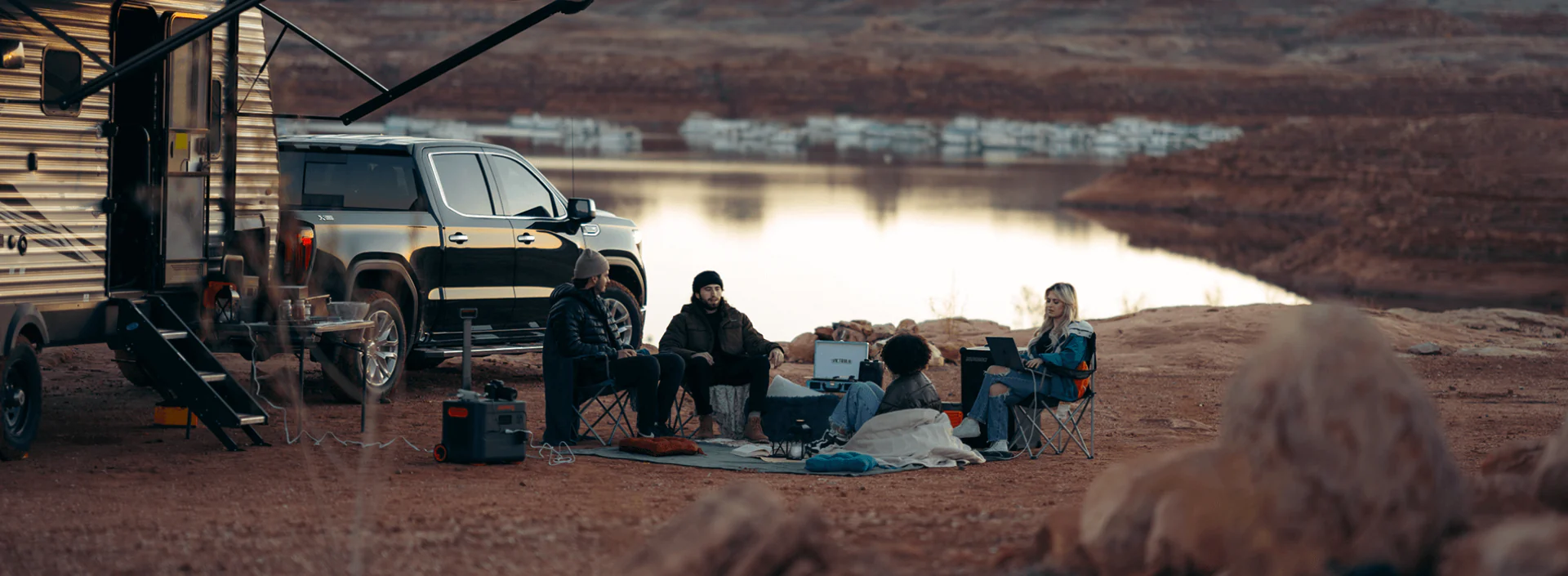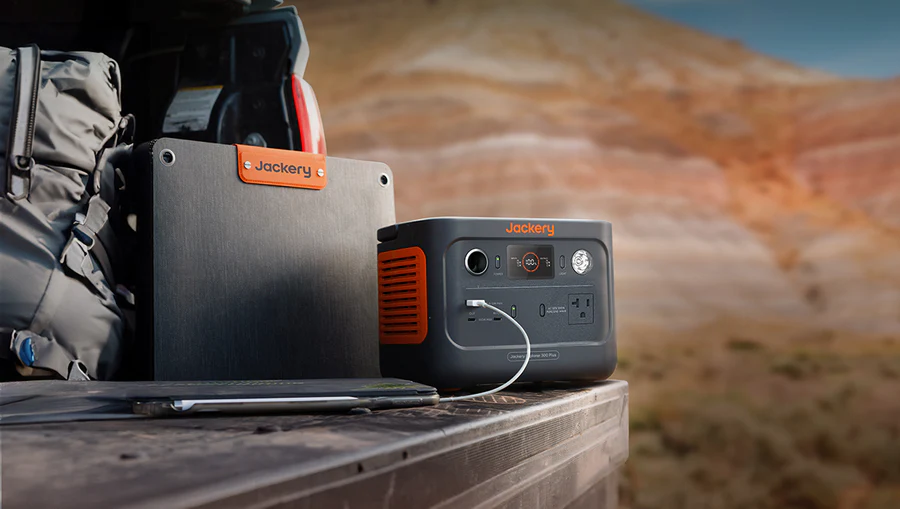Nestled within the heart of Alberta, Jasper National Park, the prodigious titan amidst the Rockies, is a magnet for lovers of RV travel. Probing deeper, one would discern that the park extends over a labyrinthine network of roads optimized for RV navigation. It grants unrivaled access to vistas of Mt. Edith Cavell, Whistlers Mountain, and the sprawling Athabasca Glacier.
Further, advanced service hubs peppered throughout the enclave foster unified connectivity for travelers to tap into real-time weather forecasts, GPS navigational support, and emergent AR experiences that vividly chronicle the rich tapestry of the region’s geology and biodiversity. Thus, with careful architectural foresight steering its design, the park manifests as a haven for RV explorers, nudging them to dig into an immersive journey mapped with precision, where each curve unveils a symphony of elemental forces etched into the very sinews of the majestic Rockies.
As the juncture of innovation and nature beckons, families on an expedition to the viridescent expanses of Jasper National Park can find solace in the embrace of high-capacity solar chargers, the vanguards facilitating a calm week of off-grid exploration. Accordingly, it is imperative to note that contemporary solar chargers featuring MPPT (Maximum Power Point Tracking) technology ensure optimal harnessing of solar energy. It translates to efficient power supply circuits adept at servicing a cavalcade of devices, from high-resolution DSLRs to ubiquitous smartphones.
Apart from that, the fundamental role of auxiliary batteries stands underscored. It champions energy storage to facilitate nocturnal utilities and encourage energy supply during diminished sunlight. Indeed, with careful planning revolving around solar capacity and energy demand analytics, parents and children alike can traverse the mesmerizing terrains adorned with a mosaic of alpine meadows and glacial rivers unshackled by energy constraints. As a result, it helps sculpt a narrative of sustainable exploration accentuated by the pinnacle of solar technology.
Scenes and Activities to Enjoy With a High-Capacity Solar Charger
Let’s discuss the scenes and activities that RV travelers can enjoy at Jasper National Park in Alberta with a high-capacity solar charger, charging their devices and equipment.
Dark Sky Sessions
Harnessing Solar Energy: To optimize your experience during the dark sky sessions, ensure your high-capacity solar charger has accumulated enough power during the day. Given Jasper National Park’s location, you can anticipate about 14 to 16 hours of sunlight[1] during summer. It gives you ample time to power your devices. Utilize a solar charger with MPPT technology to ensure the most efficient charge for the nuanced needs of sensitive devices like high-end DSLRs or astrophotography equipment. In addition, solar panels with anti-reflective coating will maximize energy absorption for an uninterrupted power supply for capturing those stellar shots of the cosmos.
Gadget Essentials: For the gadget essentials for a fruitful dark sky session, you will want to focus on devices that enhance nighttime visibility and photography. Pre-charge LED flashlights and smartphone adapters for telescopes for high-resolution captures through larger lenses. Leveraging the capabilities of a power bank with Power Delivery and Quick Charge technologies can ensure rapid yet safe charging of multiple devices. Plus, consider bringing a laptop with enough processing power and RAM to facilitate on-site editing, aided endlessly by a reliable solar charger feeding power through a high-wattage port for sustained productivity amidst the wilderness.
Sunrise and Sunset Photography Tour
Golden Hour Preparation: Boarding on a sunrise and sunset photography tour necessitates strategic planning to leverage the limited lighting conditions. Furnish yourself with a dynamic range camera that captures vibrant hues. Similarly, packing gradient-neutral density filters can be a savior, which enables you to manage challenging lighting conditions. Moreover, optimizing your solar charger’s positioning angle can be key in securing a continual power supply during the transient light phases.
Technical Insights: As we shift focus to technical insights, understanding solar irradiance becomes key. Utilize applications that provide real-time solar intensity data to gauge the optimal charging periods for your solar devices. Furthermore, for an enhanced photography experience, employ a tripod with a gimbal head, which offers a stable yet flexible setup to capture stunning panoramic shots. Besides, incorporating apps that provide golden and blue hour timings can steer you to frame shots with scrupulous precision while harmonizing technical expertise with natural splendor.
Chasing Waterfalls Photography Tour
Tech-Infused Exploration: While on the chasing waterfalls photography tour, every RV traveler must harmonize technology with the rhythmic flow of nature. Charge solar with a high IP rating would ensure protection from water and dust particles to promise durability amidst misty environments. Additionally, drones with smart obstacle avoidance systems can yield breathtaking aerial shots to encapsulate the cascades in all their grandeur. Given the damp conditions, having a dehumidifier in your tech toolkit can be indispensable in safeguarding your equipment.
Expert Techniques: When we venture deeper, the worth of mastering expert techniques comes to the forefront. Utilizing slow shutter speeds can capture the water’s fluid motion to craft ethereal imagery that vibrates with life. In addition, use the power of polarizing filters to reduce reflections and capture the vivid colors hidden beneath the water’s surface. Likewise, knowing the nuances of focal lengths and utilizing wide-angle lenses can be transformative to envelop the grandeur of the falls, fueled incessantly by a solar charger powering your myriad gadgets impeccably.
Wildlife and Land Photo Tour
Technology Meets Wild: To maintain a symbiotic relationship between your gadget’s power needs and nature’s rhythm, utilizing a solar charger with high-efficiency monocrystalline cells for sustained operations in remote locations becomes non-negotiable. Undoubtedly, it offers optimum performance even under sub-optimal lighting conditions. What’s more, infrared motion sensors paired with trail cameras can provide a rich, immersive insight into nocturnal wildlife activity. It helps unveil the hidden facets of Jasper National Park’s ecosystem.
Capturing the Essence: While going deeper into capturing the essence of the wildlife and land photo tour, a high-resolution telephoto lens becomes your ally in seizing crisp images from a safe distance. Moreover, leverage the dexterity of silent shutter mode to capture wildlife uninterrupted and in their natural demeanour. Integrating a reliable GPS device, powered continually through solar means, can facilitate continuous navigation. It helps you to scout picturesque locations without the fear of exhausting your power resources. Coupling technology with innate nature knowledge transforms your photo tour into a symphony of well-harmonized tech-infused experiences, with the solar charger as the ceaseless powerhouse facilitating every capture.
What to Consider When Using a High-Capacity Solar Charger
Now, let’s analyze what to consider when using a high-capacity solar charger for RV travel.
Type of Battery
When utilizing a high-capacity solar battery charger, the type of battery installed in your RV is paramount. Lead-acid batteries, including flooded variants, are generally cost-effective yet possess a lower energy density than lithium-ion batteries. For instance, flooded lead-acid batteries require regular maintenance to ensure optimal functioning. At the same time, you must monitor the electrolyte levels and periodically top them off with distilled water.
On the other hand, lithium-ion batteries present a more advanced solution with a higher energy density and a considerable discharge depth to facilitate a more extensive usable capacity. Moreover, lithium-ion batteries offer a more extended lifespan, which can translate to less frequent replacements and better long-term cost efficacy. An insightful example would be to consider that a lithium-ion battery can endure upwards of 300-500 cycles[2], effectively outperforming lead-acid counterparts, which manage about 100-200 cycles[3] before necessitating a replacement.
Time of Generating Electricity in Peak Hour
Understanding when your solar panels generate peak electricity is essential to maximizing your solar charger’s efficiency. Ideally, solar panels reach their maximum production at midday when the sun is at its zenith. Hence, aligning your most power-intensive activities within this period could be a deliberate approach to optimally utilizing your solar energy system.
In addition, one can integrate smart technology solutions like energy management systems that optimize energy usage around peak production hours for intelligent energy distribution throughout the day. For instance, scheduling high-consumption appliances to run during high production hours would give energy efficiency and maintain a stable battery state to leverage the peak solar output.
The Number of Solar Panels
The number of solar panels impacts your RV solar charger’s output. Generally, more panels mean higher energy production. However, the available roof space on your RV constrains the number of panels you can install. As a practical measure, one should perform a thorough energy assessment and calculate the daily energy consumption to delineate the exact number of panels required.
Furthermore, integrating solar panels with high-efficiency ratings can allow you to procure more energy with fewer panels. A compelling example would be opting for panels with above 20% efficiency, which might secure a higher energy yield per unit area, optimize space utility, and ensure sufficient energy production to cater to your RV’s power requisites.
Components of the Solar System
While delving into the components, the solar inverter is crucial in converting the direct current produced by the panels into alternating current, which most appliances utilize. The efficiency and type of inverter, including string or micro-inverters, can affect the system’s inclusive performance. For instance, micro-inverters offer the advantage of optimizing each panel’s performance individually, which can be beneficial in partially shaded environments.
Next, the charge controller acts as a guard to control the voltage and current from the solar panels to the battery. It prevents overcharging. Lastly, the solar battery stores the generated power for future use. Incorporating a high-capacity battery ensures a generous power reserve but also aids in maintaining a stable energy supply to handle peak loads capably without straining the system.
Type of Solar Panel
Selecting the right type of solar panel is vital to setting up a solar charging system. Monocrystalline panels are renowned for their higher efficiency and endurance, thanks to the high purity of silicon used in their manufacturing. Their single-crystal structure facilitates a more straightforward path for electrons to reduce energy loss and give higher efficiency, usually 15-25%[4].
Contrarily, polycrystalline panels, characterized by a multi-crystalline structure, have slightly lower efficiencies, usually hovering between 14-17%. Despite this, they remain popular owing to their affordability. Lastly, amorphous panels, made from non-crystalline silicon, offer the least efficiency, generally around 6-7%[5]. Yet, they stand out for their thin and flexible structure, which can be a boon in installations with space constraints. It illustrates a prime example of sacrificing efficiency for versatile installation options. Thus, it is imperative to balance efficiency, cost, and spatial constraints while choosing the panel type, aligning it with your RV’s specific needs.
How Jackery Improves RV Travelers’ Experience
Here, let’s explore how Jackery solar generators improve RV travellers’ experience in the above activities.
Jackery Solar Generator 3000 Pro
Jackery Solar Generator 3000 Pro can be invaluable for avid adventurers and photography enthusiasts heading to Jasper National Park. Firstly, during dark sky sessions, the quiet canyon cooling system ensures a silent operation. Besides, its lightweight and portable design with a pull rod and double wheels renders it convenient to move the RV generator to different locations.
Remarkably, with the huge capacity of 3024Wh, you can reliably power a range of devices, including lights, camera equipment, and even a coffee machine, to add comfort and functionality to your wildlife and landscape photo tours. The smart app control feature also adds to the convenience, letting you control and monitor the power usage from a distance, which can be a boon during wildlife photography, where you might be set up at a spot for hours.
As well the power station also offers cold temperature resilience and functions up to -4°F. Thus, while facilitating extended gadget runtime and offering user-friendly features, the Jackery Solar Generator 3000 Pro ensures that RV travellers can focus on the beauty and adventure that Jasper National Park Alberta offers with a dependable power source at their fingertips.
Jackery Solar Generator 300 Plus
For RV travellers on visually rich experiences like dark sky sessions and immersive photography tours in Jasper National Park, the Jackery Solar Generator 300 Plus can also be matchless. As dawn breaks, you can charge your DSLR or smartphone with the ultra-fast charging feature to ensure you can capture every hue of the sunrise with no interruptions. As you move to a chasing waterfalls photography tour, the generator stands by resiliently, being IP68 waterproof.
In addition, it enhances your wildlife and land photo tours with a reliable power source to keep your equipment running; it’s a light burden with its mere 11 lbs. of weight. When night falls and the stars grace the sky, the RV generator facilitates an uninterrupted dark sky session to back up light sources and camera equipment for a prolonged period, thanks to its large 288Wh capacity. Not only that, but the generator facilitates real-time battery management via Wi-Fi or Bluetooth, which guarantees that you’re not caught off guard during your adventures.
Importantly, the use of the generator goes beyond photography; imagine enjoying a freshly caught fish in a remote location with the help of portable electric grills powered by the generator. The Jackery Solar Generator 300 Plus powers your devices and ensures uninterrupted, enriched, and vivid travel experiences, becoming an indispensable part of your adventures.








